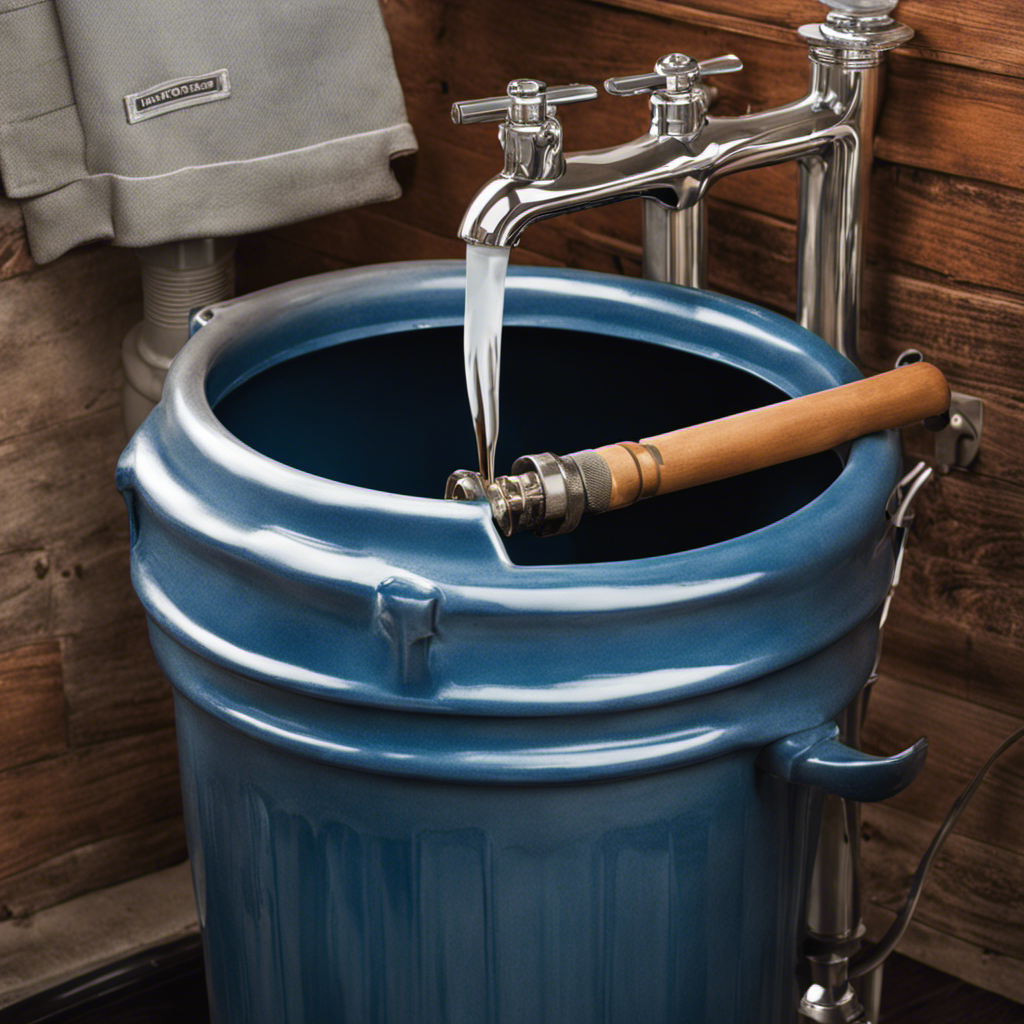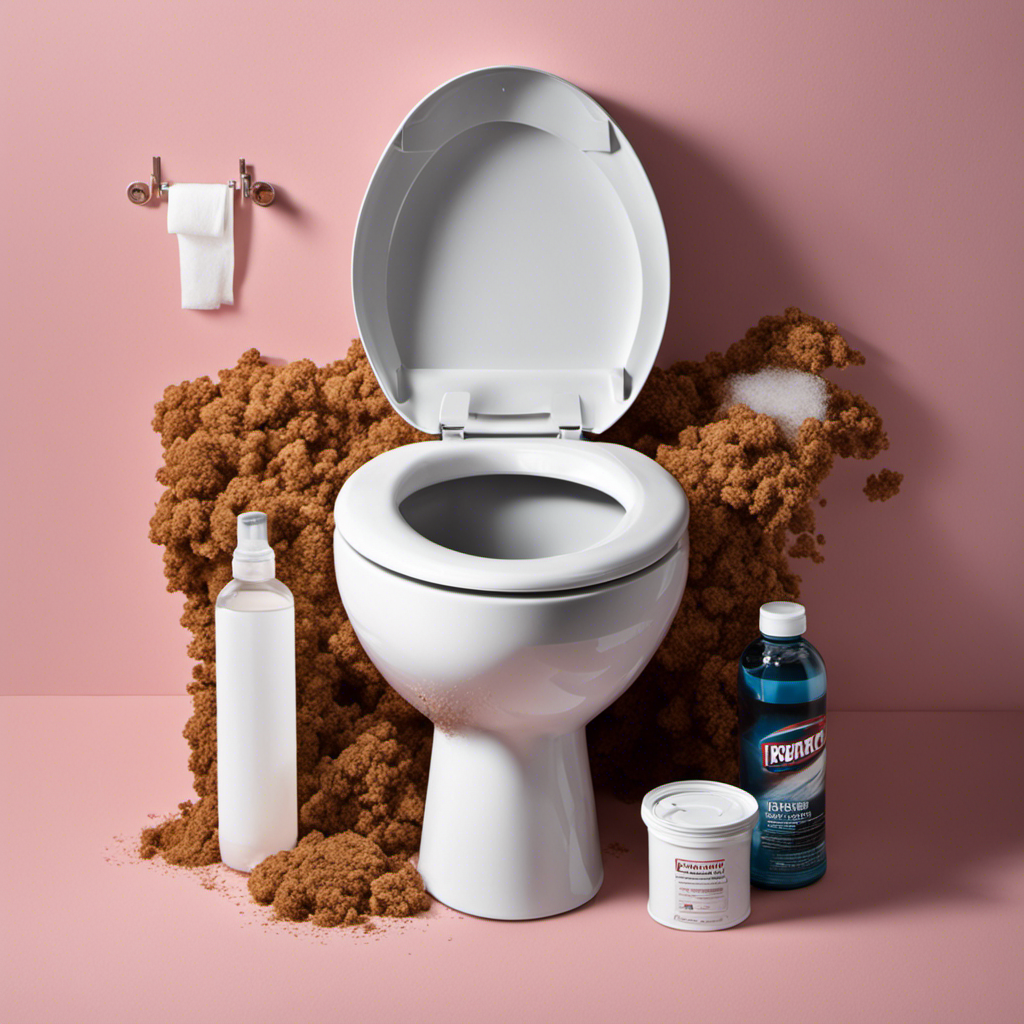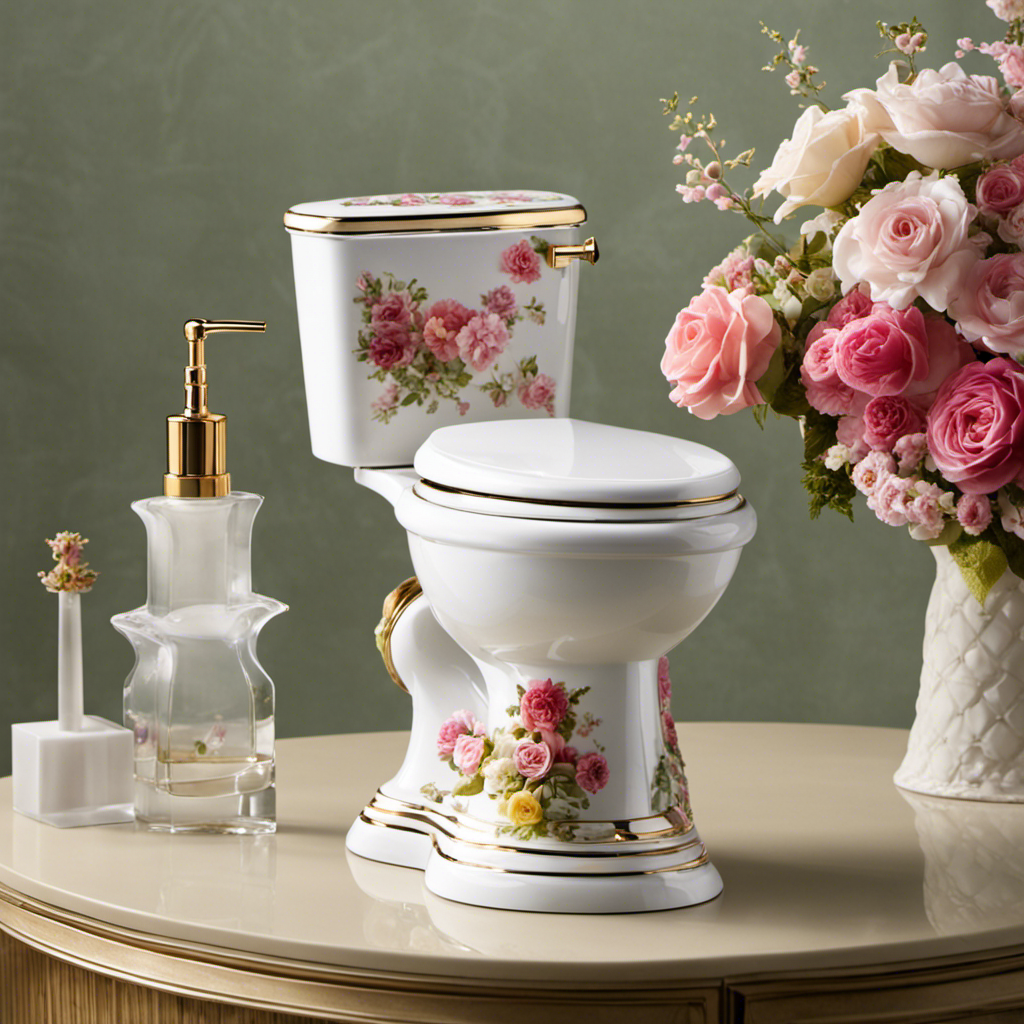Did you know that a leaking toilet can waste up to 200 gallons of water per day?
As someone who has dealt with this issue firsthand, I understand the importance of knowing how to properly drain a toilet tank.
In this article, I will guide you through the step-by-step process of draining a toilet tank, from gathering the necessary tools to troubleshooting common issues.
By the end, you’ll be equipped with the knowledge to tackle this task with confidence and save water in the process.
Key Takeaways
- Draining the toilet tank prevents water waste and promotes water conservation.
- Regular maintenance, including draining the tank, helps remove sediment, mineral deposits, bacteria, and mold.
- The necessary tools and materials for draining the tank include a bucket, towel or sponge, adjustable wrench, and rubber gloves.
- Proper disposal of drained water and thorough cleaning of the tank are essential for a hygienic process.
Understanding the Purpose of Draining a Toilet Tank
To understand why you should drain a toilet tank, you need to know its purpose. The toilet tank serves as a storage unit for the water that flushes down into the bowl when you use the toilet. It holds a certain amount of water that is released when you flush, creating the necessary force to remove waste.
Regular maintenance, including draining the tank, offers several benefits. Firstly, it helps to prevent the accumulation of sediment and mineral deposits, which can affect the toilet’s performance and lead to clogs.
Secondly, draining the tank allows for a thorough cleaning, removing any bacteria or mold that may have formed.
Lastly, it promotes water conservation by ensuring that the toilet is functioning efficiently and not wasting unnecessary water during each flush.
Gathering the Necessary Tools and Materials
First, you’ll need to gather the necessary tools and materials for the task at hand. Here are the items you’ll need to successfully drain a toilet tank:
- Bucket: A bucket will be used to collect the water from the tank as it is drained.
- Towel or sponge: This will come in handy to soak up any excess water that may spill during the process.
- Adjustable wrench: You’ll need this tool to loosen and remove the water supply line from the bottom of the tank.
- Rubber gloves: It’s important to wear rubber gloves to protect your hands from any potential contaminants in the tank.
Taking the necessary precautions before draining a toilet tank is crucial. By gathering these tools and materials, you’ll be well-prepared to tackle the task at hand.
Next, I will guide you through a step-by-step process on how to drain a toilet tank.
Step-by-Step Guide to Draining a Toilet Tank
Now that you have gathered the necessary tools and materials, let’s begin by turning off the water supply to the toilet. This is an important step in toilet tank maintenance and can help prevent water damage.
Locate the shut-off valve, usually located behind or near the toilet. Turn it clockwise until it stops to shut off the water flow.
Once the water supply is turned off, flush the toilet to drain the tank. This will remove most of the water from the tank, making it easier to work on.
To ensure that the tank is completely drained, use a sponge or towel to soak up any remaining water.
Troubleshooting Common Issues During the Draining Process
One common issue you may encounter when draining a toilet tank is a slow or incomplete flush. This can be frustrating, but it’s important to troubleshoot the problem and find a solution.
Here are some steps to help you troubleshoot and prevent future drainage problems:
-
Check for clogs: Use a plunger or a toilet auger to clear any blockages in the toilet drain. Make sure to wear gloves and follow proper safety precautions.
-
Inspect the flapper: The flapper is responsible for releasing water into the toilet bowl during a flush. If it’s damaged or not sealing properly, it can cause a weak flush. Replace it if necessary.
-
Clean the jets: Over time, mineral deposits can build up in the toilet jets, affecting the water flow. Use a brush and some vinegar to clean them thoroughly.
-
Maintain regular maintenance: To prevent future drainage problems, make sure to clean your toilet regularly and avoid flushing items that can cause clogs, such as wipes or sanitary products.
Proper Disposal of Drained Water and Cleaning Up Afterward
To properly dispose of the drained water and clean up afterward, it’s important to follow these steps.
After draining the toilet tank, you have a few disposal methods to choose from. One option is to simply pour the water down the drain, making sure to run the tap to prevent any clogs. Another method is to collect the water in a bucket and use it for purposes such as watering plants or cleaning.
When it comes to cleaning up, start by wiping down the toilet tank with a disinfectant cleaner to remove any residue. Pay attention to the corners and hard-to-reach areas. Then, rinse the tank with clean water and dry it thoroughly with a towel.
Following these disposal methods and cleaning techniques will ensure a hygienic and efficient process.
Frequently Asked Questions
Can I Use Any Type of Container to Collect the Drained Water?
Yes, you can use any type of container to collect the drained water. There are many container options available, such as buckets or large bowls. It’s a great way to conserve water and utilize alternative sources.
Is It Necessary to Turn off the Water Supply Valve Before Draining the Toilet Tank?
Yes, it is necessary to turn off the water supply valve before draining the toilet tank. By doing so, you can prevent any additional water from entering the tank while you drain it.
How Often Should I Drain the Toilet Tank?
Draining the toilet tank is an important maintenance task. Regularly cleaning the tank helps prevent buildup and keeps the toilet functioning properly. Neglecting to do so can lead to clogs and other plumbing issues.
Can I Drain the Toilet Tank if There Is a Blockage in the Toilet Bowl?
Yes, you can drain the toilet tank even if there is a blockage in the toilet bowl. It’s important to address the blockage first before attempting to drain the tank to prevent further complications.
Can I Use the Drained Water for Other Purposes, Such as Watering Plants?
Yes, you can reuse the drained water from the toilet tank for other purposes such as watering plants. However, it’s important to ensure proper disposal of the drained water to avoid any contamination or health risks.
Conclusion
In conclusion, draining a toilet tank may seem like a daunting task, but with the right tools and a little know-how, it can be as easy as a gentle dance.
Remember, each step is like a well-choreographed move, ensuring a smooth and flawless performance. So gather your materials, follow the steps with precision, and troubleshoot any issues that may arise.
With a graceful finish, dispose of the drained water responsibly and leave your bathroom sparkling clean. You’ve mastered the art of toilet tank draining, my friend. Bravo!










